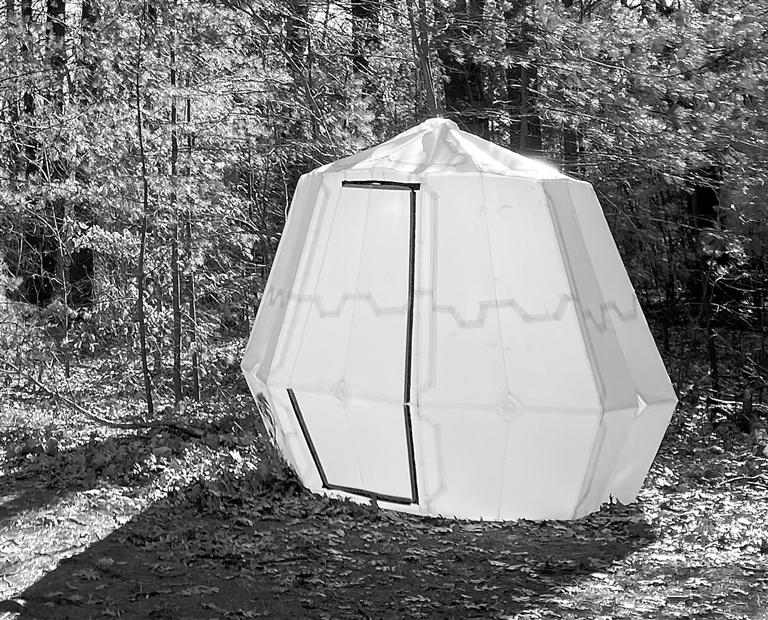
APPLIED mathematics researchers at Harvard University have created origami-inspired structures that can go from flat-packed items to three-dimensional structures with the help of air pressure. The technology works almost like an inflatable bouncy castle, but once the walls click into place, the air pressure can be removed and the structures can keep their shape, Benjamin Thompson and Shamini Bundell report for the Nature podcast. That’s because the origami designs were created to be bistable, or structurally sound in two forms, so in this case, folded and inflated. “It’s a great bridging between the mechanics of origami — the geometry of it — and actually getting all the way to a large-scale structure. That’s quite rare,” says University of Illinois-Urbana Champaign civil engineer Ann Sychterz, who specializes in deployable shelter designs and was not involved in the study. “To actually get this work out into real life, these are the necessary types of steps.” The Nature paper shows the designs of several small-scale origami structures and two large structures, an expanding arch and a pop-up shelter. The smaller structures, which resemble small starbursts and triangles, face fewer challenges when holding their inflated shape. Large structures have to wrestle more with holding up their own weight, and structures meant to sit outdoors will contend with wind and rain. “I believe what we’re doing is kind of origami-plus,” says David Melancon, Harvard engineering Ph.D. student and first author of the new research, to the Nature podcast. “It’s not the most purist form of origami where you start with a sheet of paper and introduce folds. For us, we’re thinking of fabrication methods that basically you don’t have to be good at origami to create the shapes.” Instead of paper, the inflatable structures are made of pre-cut pieces of cardboard or plastic. The flat pieces are sturdy and connected to each other with hinges, like flexible tape. The team spent years researching the geometry and structural engineering details of the structures to find configurations that were flexible enough to expand when air was pumped into them and sturdy enough to hold their shape when the air pressure was removed. “You need to carefully design its energy barrier, and that’s most of the engineering game,” says lead author and Harvard applied mechanics specialist Katia Bertoldi. “It took us three years to really get to the bottom of it to figure out the geometric analysis and the experimental part — how to build it.” The best hinges gave an audible click when they reached their stable inflated state, which Bertoldi compares to the feeling of a 1990’s snap bracelet locking into place. With the hinges solved, the team created their first large structure: a 61cm-tall and 1.5m-wide arch that collapses to a sleek 20cm-tall and 30cm-wide. The tent structure is even larger at about 2.4 meters wide and 2.4 meters tall. In the team’s “clown car” demonstration, Melancon carries two tables, 14 chairs and a bicycle out of the tent to show just how large it is inside. But before the tent is inflated, it is only about the size of a twin mattress. (SD-Agencies) | 
